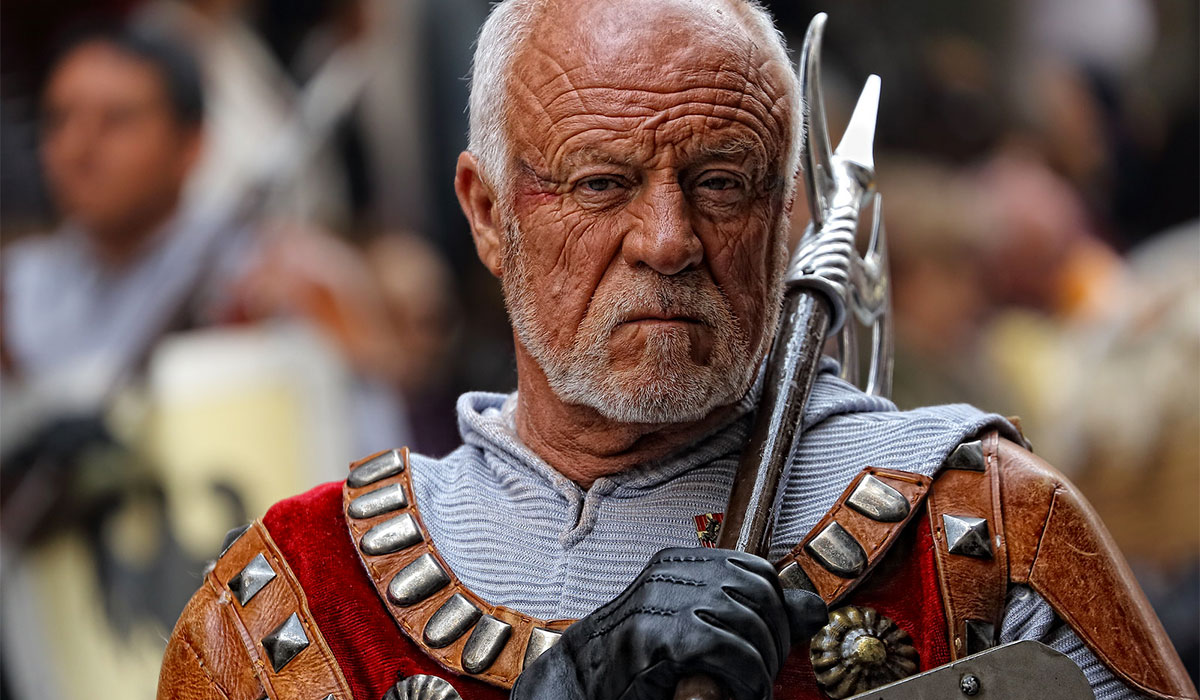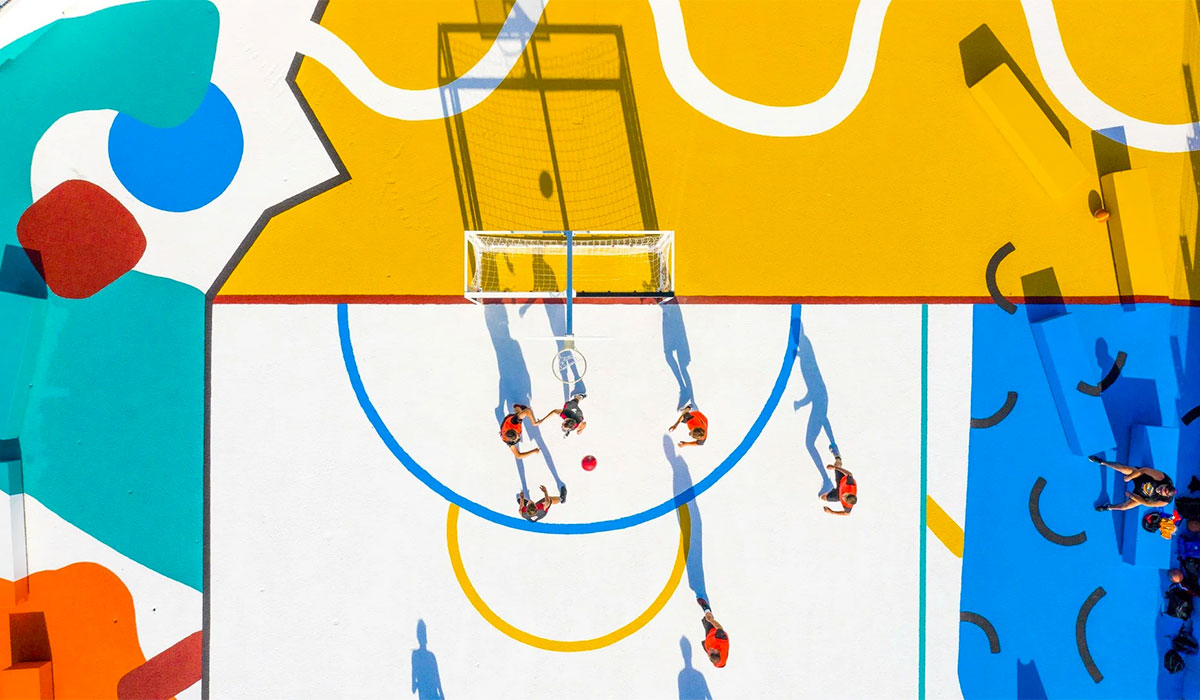Route through the city center of Valencia - Ciutat Vella
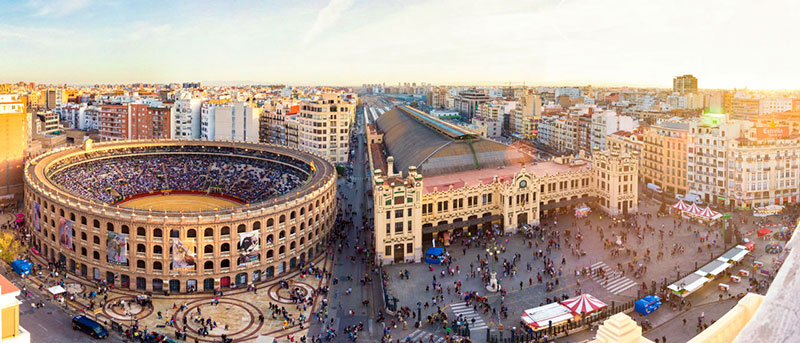
We have come up with different routes you can take through Valencia! These will show you the essential places and monuments that you must have seen while passing through the center.
Start at the Estación del Norte, Valencia’s central train station. The building was constructed in the early 20th century and is one of the most symbolic monuments of the city’s civil architecture. Its facade, with patterns of plants, oranges and orange blossom, is inspired by Valencian agriculture and other elements of the city, which is significant of the modernist pressure between local and cosmopolitan, between modernity and tradition.
Next to it is the Plaza de Toros built between 1850 and 1860, inspired by Roman civil architecture such as the Colosseum, in addition to the famous bullfights, concerts are also organised there.
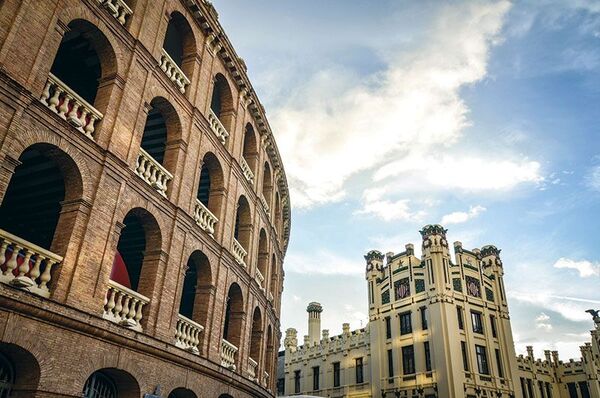
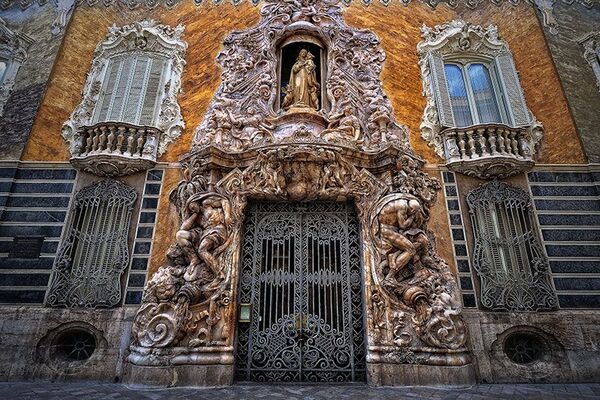
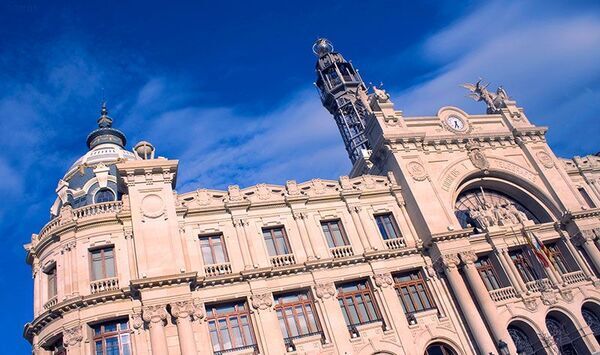
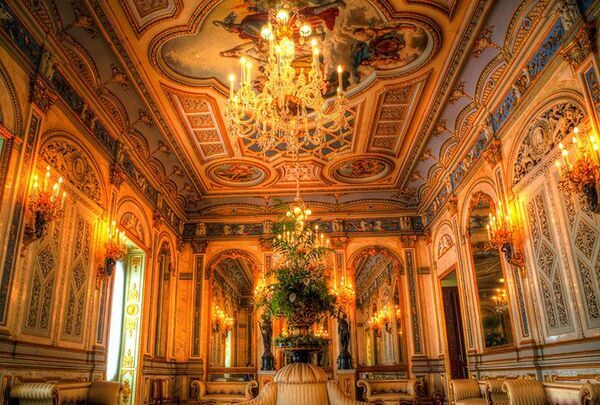
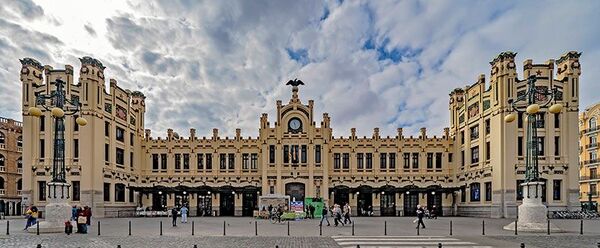
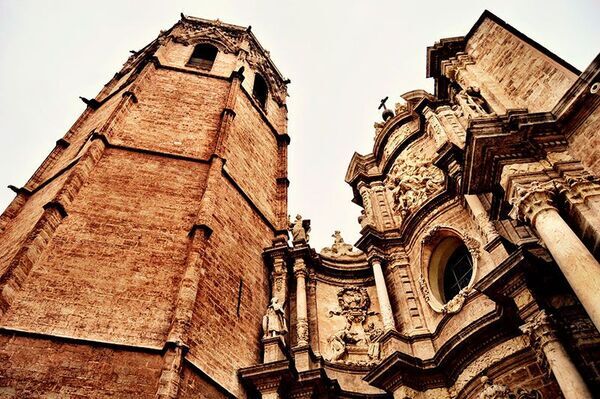
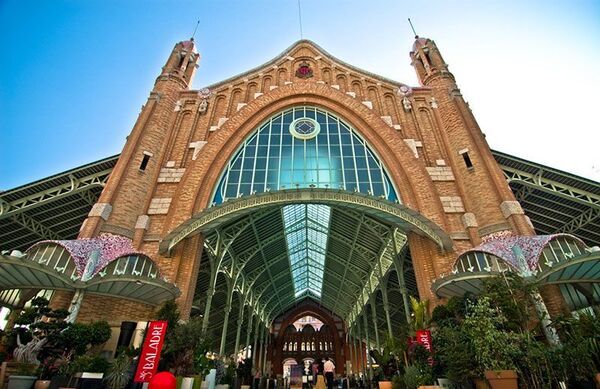
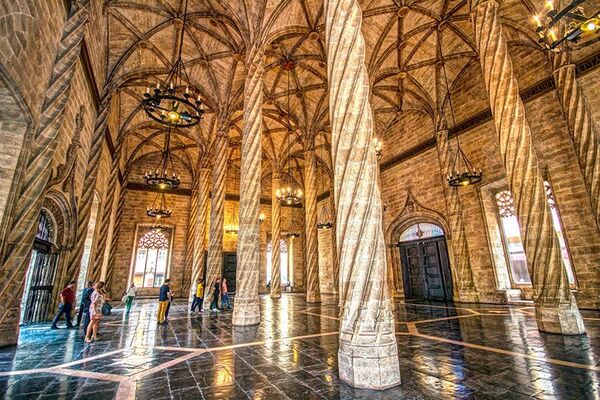
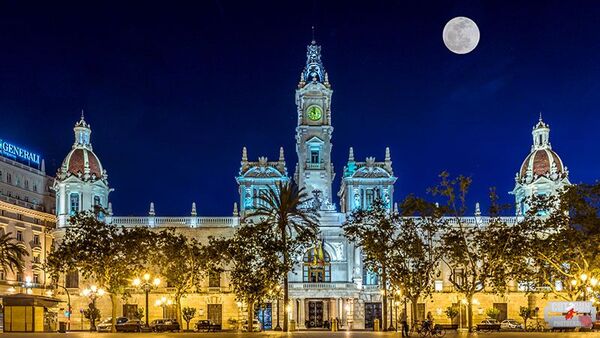









Continue along the Avenida Marques de Sotelo towards the Plaza del Ayuntamiento, the heart of the city and home to one of the most representative civil buildings in Valencia. On the square you can see City Hall’s monumental and modernist building, and you can also admire the Correos building that was built during the beginning of the 20th century. Its interior is filled with stained glass windows and a dome that covers the beautiful ceiling.
Next stop is the Mercado de Colón, one of the best examples of Valencian modernism architecture from the beginning of the century. It currently serves as a place to enjoy the exquisite cuisine and culture.
Continue on so that you pass by the Banco de Valencia building, the most significant work of the Valencian regionalist neo-baroque.
You will then arrive at one of the most impressive buildings in the city, the Palacio del Marqués de Dos Aguas, that represents Baroque Valencia. Inside is the National Museum of Ceramics and Sumptuary Arts by “Gonzalez Martí”.
Follow your way and you’ll stumble upon the Plaza de la Reina, where one of the doors of the Cathedral is located in it and the Miguelete tower rises above it majestically. Go up on the Miguelete tower and you’ll get access to the most wonderful view of the city.
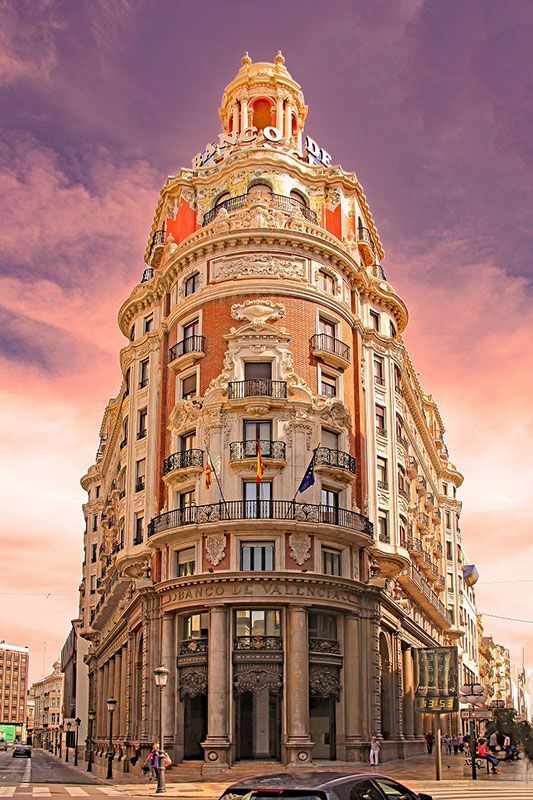
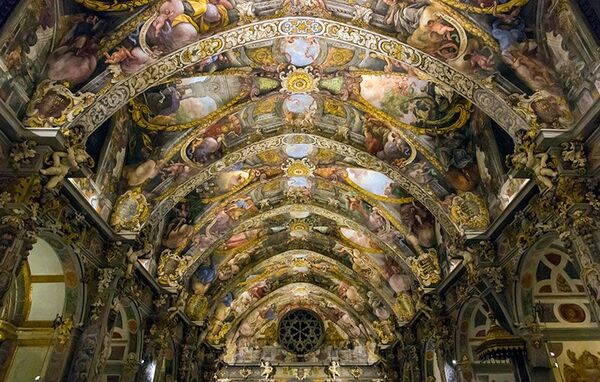
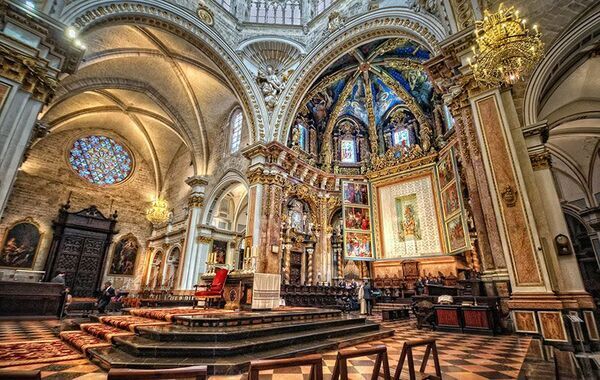
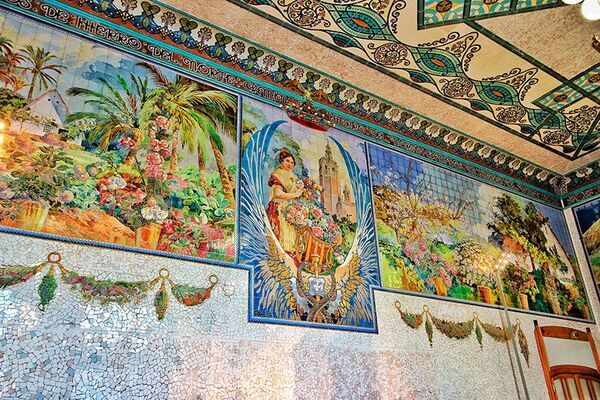
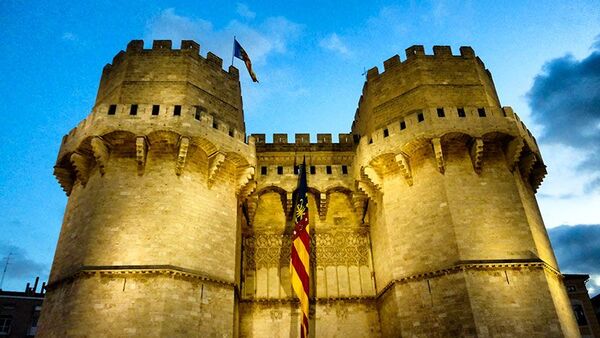
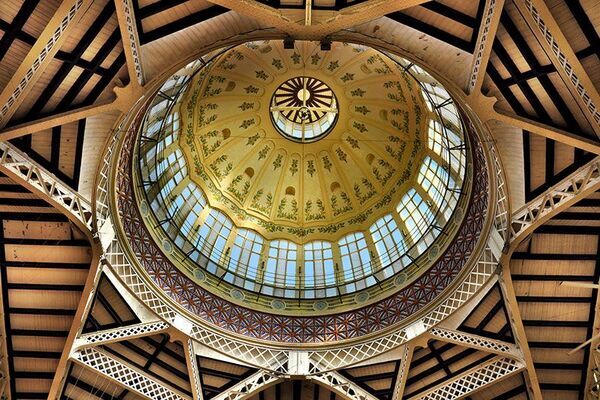
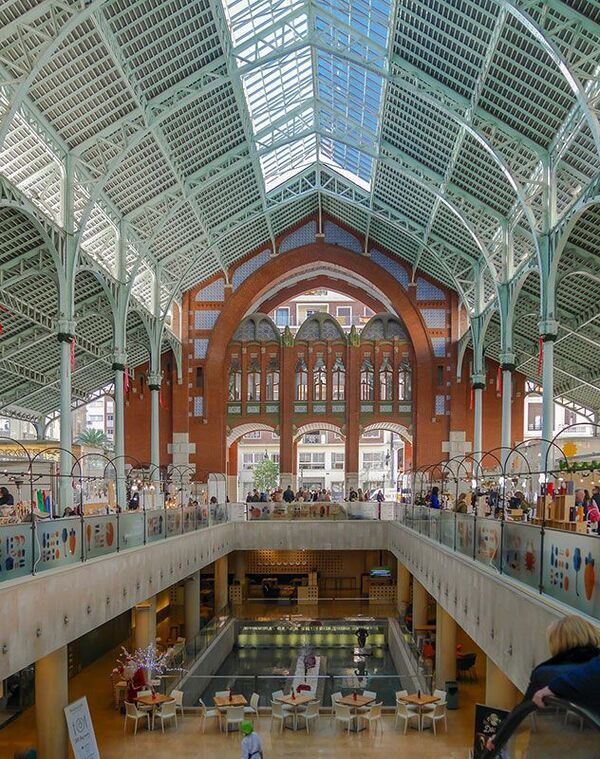
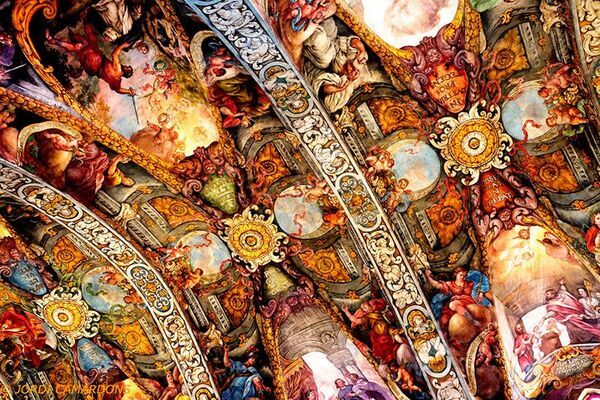
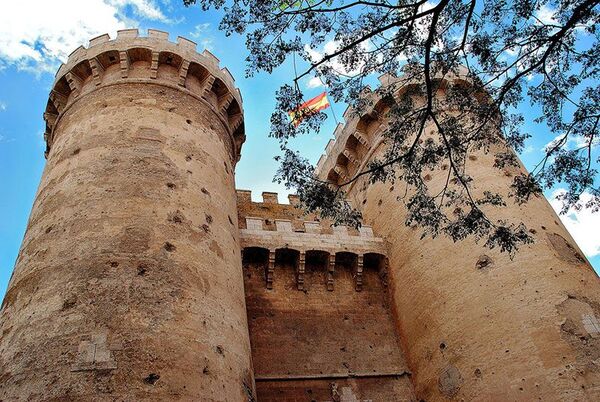









Resume your journey to the Plaza de la Virgen, through Calle del Micalet, where you can find the Valencian Cathedral that was built on an Arab Mosque. It even has three Gothic, Romanesque and Baroque doors. In it is a chalice, which many claim is the Holy Grail. Just next to the Cathedral is the Basilica of the Virgen de los Desamparados, the patron saint of the city of Valencia. Take the opportunity to rest for a bit on the steps of the fountain in the square. You will see that the central figure represents the Turia River and the figures that surround it have jugs that fill up in the water, and they represent the tributaries of the river.
Behind the Plaza de la Virgen is the Almoina, where there are remains of the Roman City. They can be seen from the square above through the glass floor of the fountain or entering the museum. Then, continue on towards the Torres de Serranos which are one of the two fortified gates of the medieval wall that still remains today.
Then enter the Calle Caballeros where you can find the Church of San Nicolás, the Valencian “Sistine Chapel”. It is one of the picturesque and architectural jewels. Barrio del Carmen is one of the neighbourhoods that make up the historic center of Valencia. It’s an old neighbourhood, which grew between two walls: the Muslim wall on the east (11th century) and the new Christian wall (14th century) on the west. This neighbourhood is the place to go for a proper Valencian night, we’re talking about lots of restaurants, where you can enjoy a wide variety in cuisine.
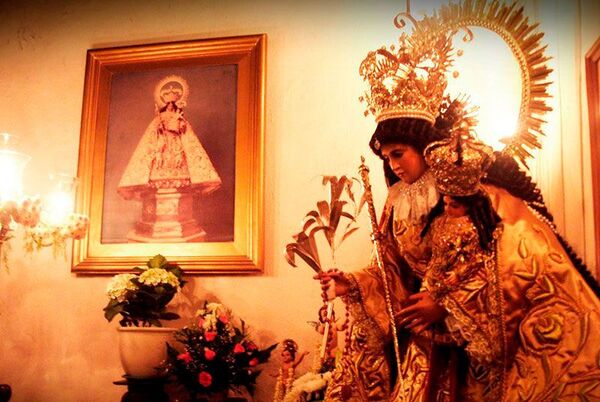
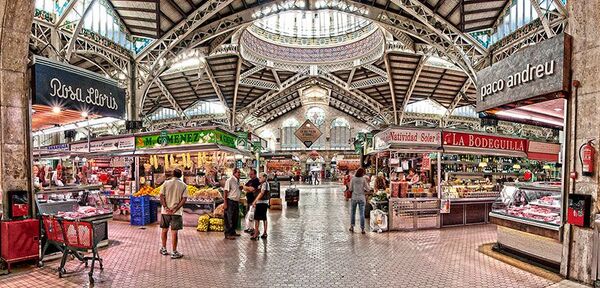
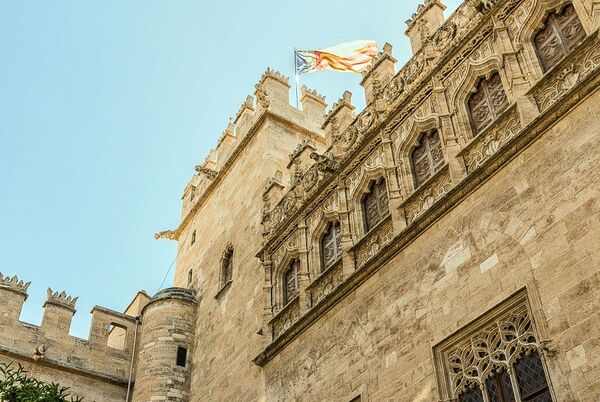
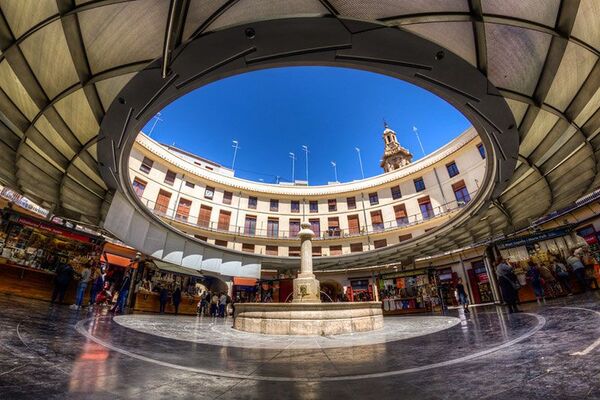
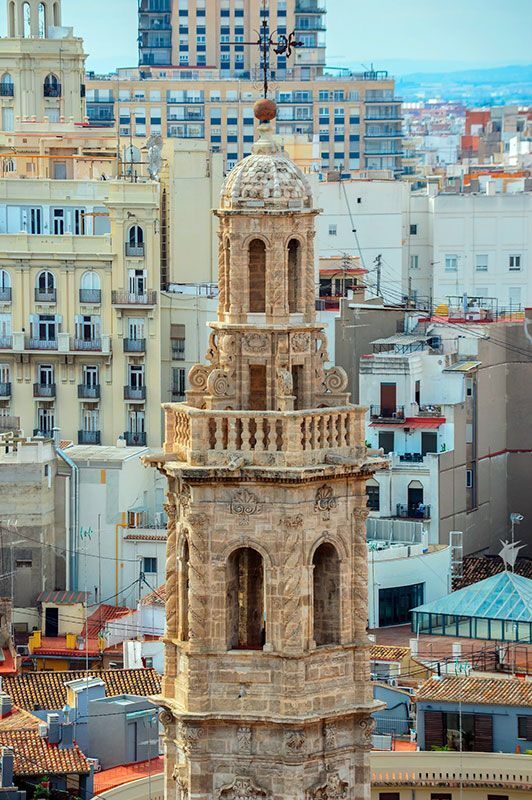
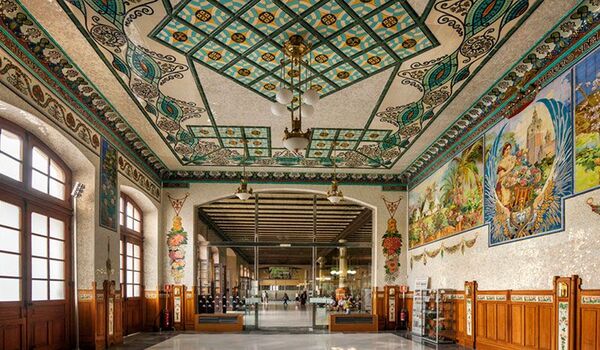
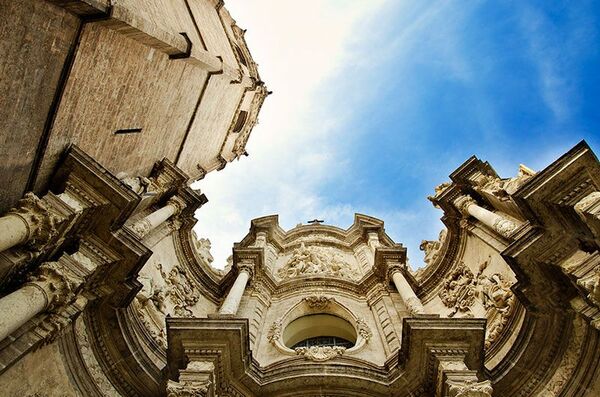
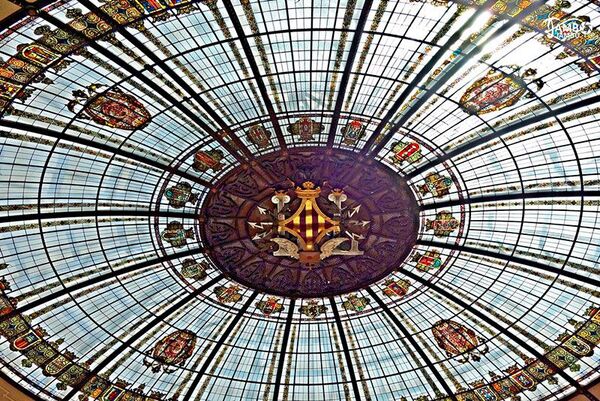








Continue on Calle Caballeros to reach Plaza del Tossal and then Torres de Quart, the other gateway to the city, that is still standing today. Then we recommend you head to the Central Market. There’s all kinds of food that are sold, like vegetables, meat and fish. It’s a nice experience to go for groceries in a charming market with great architecture, tradition and history. In front of the Central Market is the Lonja de la Seda, one of the most famous civil Gothic monuments that Europe can offer.
While you’re at it, you should go all the way and visit the Plaza Redonda (also known as Plaza Santa Catalina), ideal for walking around on Sundays. You’ll find colourful markets with paintings, art, music, trinkets, second-hand objects, products for animals and much more.
Next to it is the Plaza de Toros built between 1850 and 1860, inspired by Roman civil architecture such as the Colosseum, in addition to the famous bullfights, concerts are also organised there.


















Continue along the Avenida Marques de Sotelo towards the Plaza del Ayuntamiento, the heart of the city and home to one of the most representative civil buildings in Valencia. On the square you can see City Hall’s monumental and modernist building, and you can also admire the Correos building that was built during the beginning of the 20th century. Its interior is filled with stained glass windows and a dome that covers the beautiful ceiling.
Next stop is the Mercado de Colón, one of the best examples of Valencian modernism architecture from the beginning of the century. It currently serves as a place to enjoy the exquisite cuisine and culture.
Continue on so that you pass by the Banco de Valencia building, the most significant work of the Valencian regionalist neo-baroque.
You will then arrive at one of the most impressive buildings in the city, the Palacio del Marqués de Dos Aguas, that represents Baroque Valencia. Inside is the National Museum of Ceramics and Sumptuary Arts by “Gonzalez Martí”.
Follow your way and you’ll stumble upon the Plaza de la Reina, where one of the doors of the Cathedral is located in it and the Miguelete tower rises above it majestically. Go up on the Miguelete tower and you’ll get access to the most wonderful view of the city.


















Resume your journey to the Plaza de la Virgen, through Calle del Micalet, where you can find the Valencian Cathedral that was built on an Arab Mosque. It even has three Gothic, Romanesque and Baroque doors. In it is a chalice, which many claim is the Holy Grail. Just next to the Cathedral is the Basilica of the Virgen de los Desamparados, the patron saint of the city of Valencia. Take the opportunity to rest for a bit on the steps of the fountain in the square. You will see that the central figure represents the Turia River and the figures that surround it have jugs that fill up in the water, and they represent the tributaries of the river.
Behind the Plaza de la Virgen is the Almoina, where there are remains of the Roman City. They can be seen from the square above through the glass floor of the fountain or entering the museum. Then, continue on towards the Torres de Serranos which are one of the two fortified gates of the medieval wall that still remains today.
Then enter the Calle Caballeros where you can find the Church of San Nicolás, the Valencian “Sistine Chapel”. It is one of the picturesque and architectural jewels. Barrio del Carmen is one of the neighbourhoods that make up the historic center of Valencia. It’s an old neighbourhood, which grew between two walls: the Muslim wall on the east (11th century) and the new Christian wall (14th century) on the west. This neighbourhood is the place to go for a proper Valencian night, we’re talking about lots of restaurants, where you can enjoy a wide variety in cuisine.
















Continue on Calle Caballeros to reach Plaza del Tossal and then Torres de Quart, the other gateway to the city, that is still standing today. Then we recommend you head to the Central Market. There’s all kinds of food that are sold, like vegetables, meat and fish. It’s a nice experience to go for groceries in a charming market with great architecture, tradition and history. In front of the Central Market is the Lonja de la Seda, one of the most famous civil Gothic monuments that Europe can offer.
While you’re at it, you should go all the way and visit the Plaza Redonda (also known as Plaza Santa Catalina), ideal for walking around on Sundays. You’ll find colourful markets with paintings, art, music, trinkets, second-hand objects, products for animals and much more.




